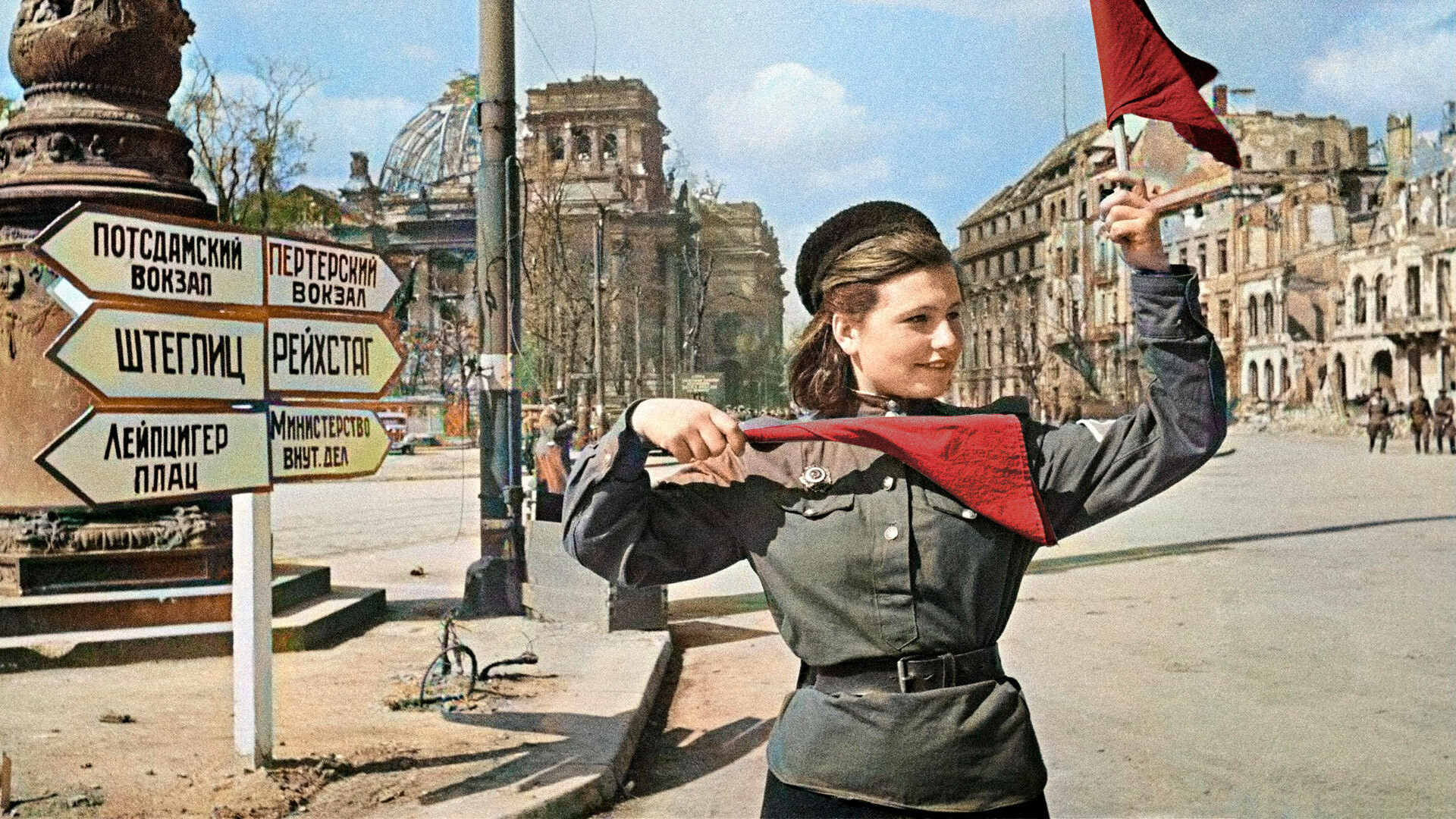
Red Army soldier Katya Spivak handling the traffgic in the streets of Berlin, May 1945.
Yakov Ryumkin/SputnikIn early February 1945, the troops of the 1st Byelorussian Front, under the command of Marshal Georgy Zhukov, reached the distant approaches to Berlin. They were just 70 km away from the “lair of the Nazi beast”.
Over the next few months, the Red Army built up its strength, getting ready for the most important operation of the final stage of the war. The successful offensives in Eastern Pomerania, Hungary, Slovakia and Austria, conducted at that time, made it possible to secure the flanks of the Soviet troops operating along the principal line of attack.
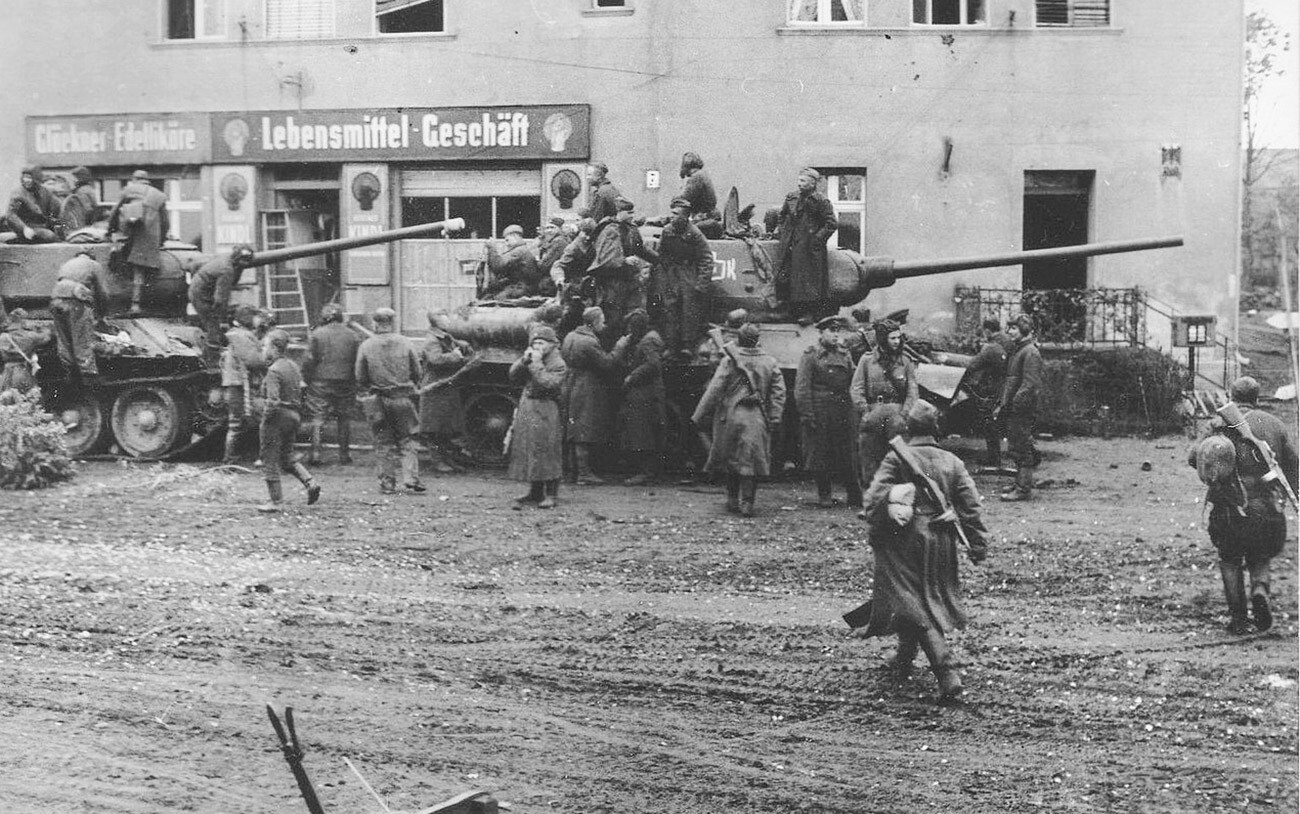
The 2rd Guards Tank Army in the Berlin operation.
Public DomainThe USSR concentrated a grouping of about two million men to take Berlin. In addition to Zhukov’s troops, 1st Ukrainian Front under Marshal Ivan Konev, 2nd Byelorussian Front under Marshal Konstantin Rokossovsky, 18th Air Army, which consisted of long-range aviation, and also the Dnieper Flotilla and the Baltic Fleet, were all engaged in the operation. The 1st and 2nd armies of the Wojsko Polskie also operated as part of the fronts.
“We decided to hit the defending enemy troops with such force as to instantly stun them and shake them to the core by unleashing our aviation, tanks, artillery and other types of weapons on them,” Zhukov wrote in his ‘Reminiscences and Reflections’ autobiography.
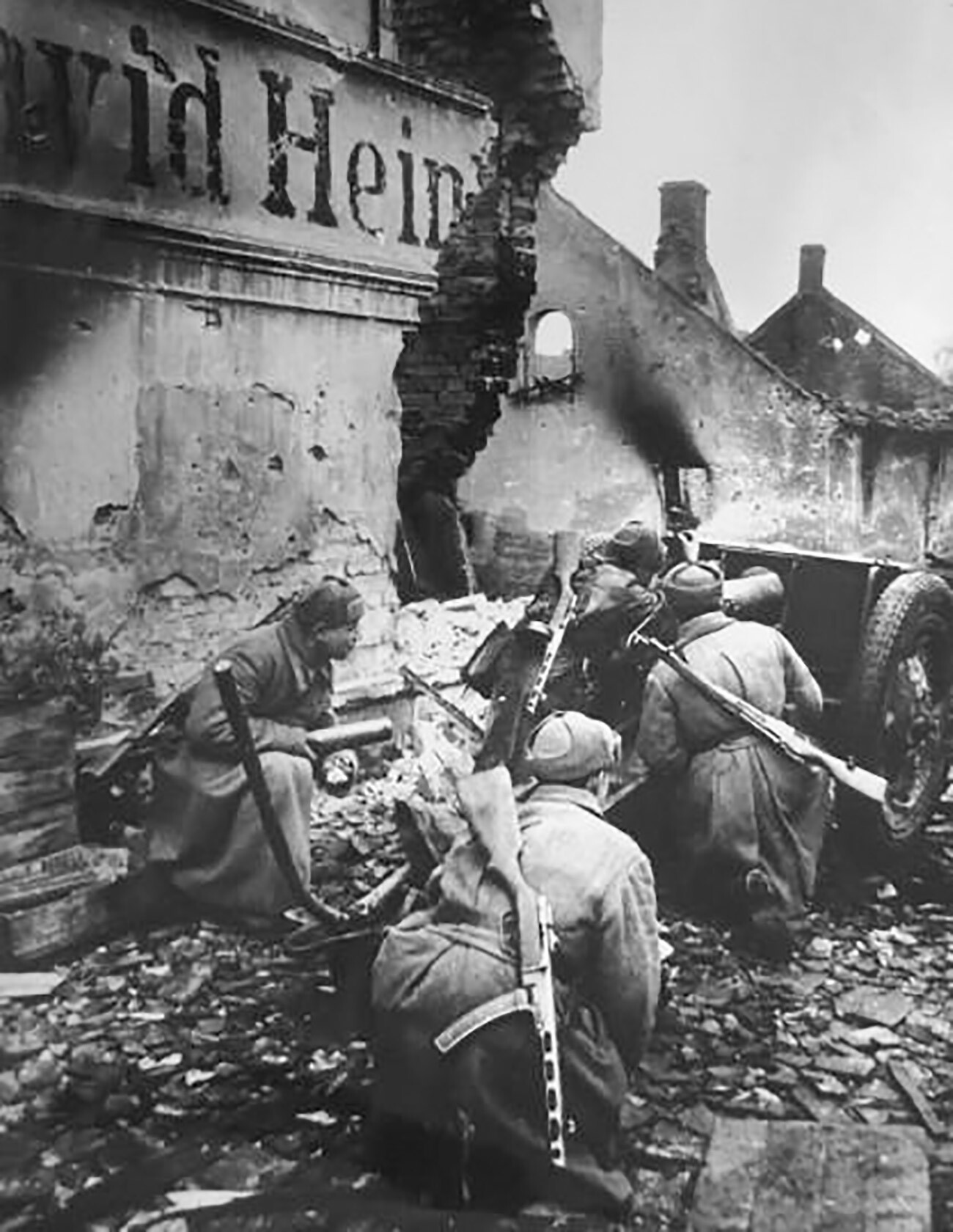
Soviet troops during the fighting in Berlin.
Alexander Ustinov/МАММ/МDF/russiainphoto.ruThe capital of the Third Reich was defended by troops of Army Group Center and Army Group Vistula and also Volkssturm militia battalions, totalling 800,000 men. The Soviet grouping outnumbered the enemy two to one in manpower and aircraft and four to one in artillery, tanks and self-propelled guns.
The Germans pinned all their hopes on the mighty defense in depth, which they had built from the Oder to Berlin. One of the first serious fortified lines which the Soviet troops had to overcome were the heights near the town of Seelow, where heavy weapons and a sizable garrison of 100,000 men were deployed. According to Marshal Zhukov, “having dug itself in deep, especially behind the rear slopes of the heights, the enemy was able to protect its forces and hardware from our artillery fire and aerial bombardment”.
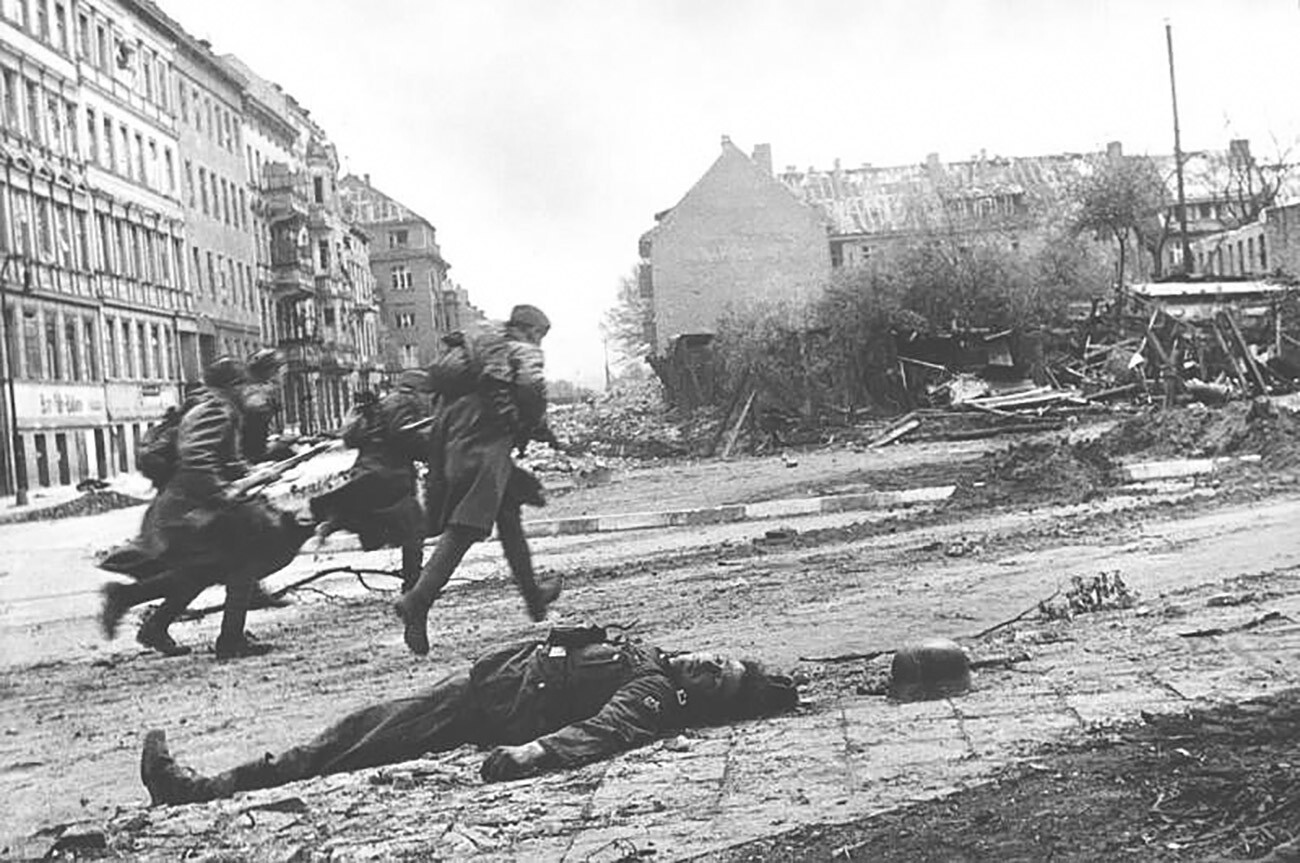
Fighting in the city streets.
Ivan Shagin/МАММ/МDF/russiainphoto.ruInitially, the Soviet offensive, which had started on April 16, was quite heavy going. The Soviet troops had to literally gnaw away at the German defenses, suppressing fierce enemy resistance. The Seelow Heights, meanwhile, was only captured on April 18.
Nevertheless, several days later, tank formations of the 1st Byelorussian Front and the 1st Ukrainian Front gained momentum and started to successfully break through the enemy’s defensive lines, opening the way to the German capital for the combined arms armies. On April 20, Soviet long-range artillery opened fire on Berlin for the first time, sending a special kind of birthday greeting to Adolf Hitler.
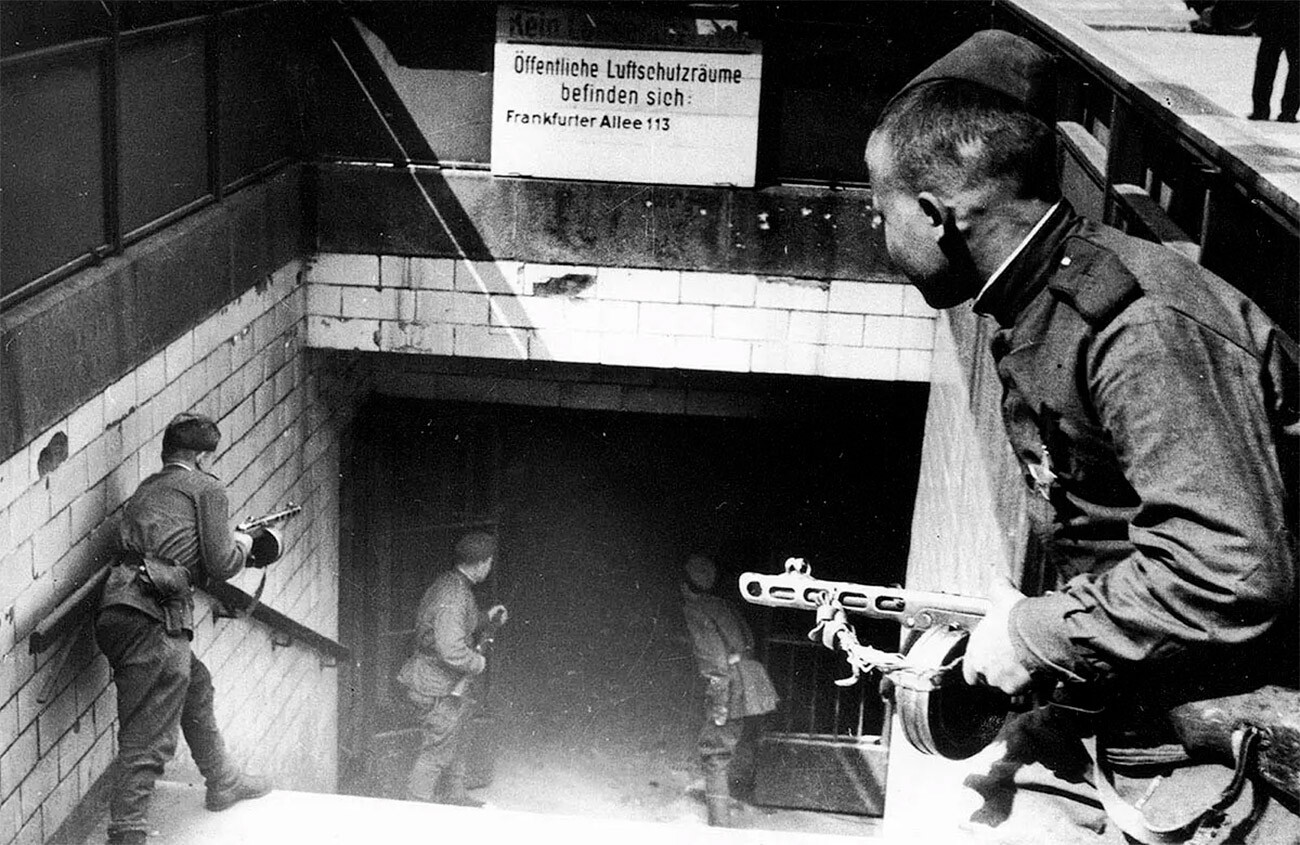
Soviet soldiers enter the Frankfurter Allee railway station.
Public DomainZhukov's and Konev's troops systematically went about capturing and encircling the city from the north and south. Each of the commanders was poised to storm Berlin, but in the event Stalin entrusted Georgy Konstantinovich [Zhukov] with the taking of the capital.
Near Ketzin, west of Berlin, on April 25, troops of the 2nd Guards Tank Army of the 1st Byelorussian Front met up with units of the 4th Guards Tank Army of the 1st Ukrainian Front. The city was now fully encircled and around 200,000 Wehrmacht soldiers and SS troops, as well as fighters of Volkssturm militia battalions, found themselves trapped.
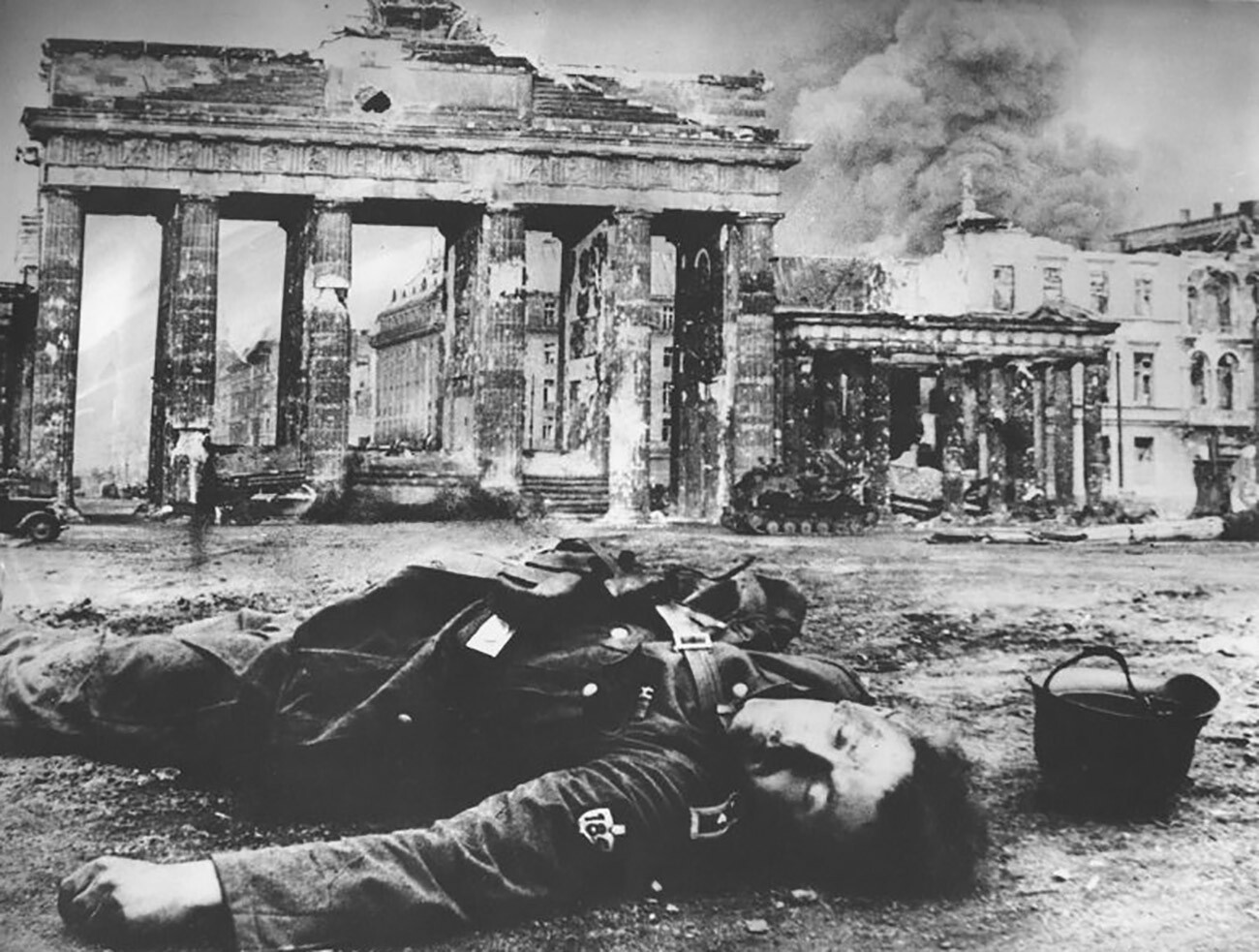
The Brandenburg Gate.
Ivan Shagin/МАММ/MDF/russiainphoto.ruThe capital of the Third Reich was a veritable fortress by that time. Every street and every multi-story building with solid walls had been turned into a fortified zone. The Germans extensively used tunnels and other underground structures (the Metro, bomb shelters, sewers and drainage canals) to move rapidly from one part of the city to another and even to spring up unexpectedly in the rear of the Soviet troops.
The Soviet offensive was led by assault groups belonging to infantry sub-units, reinforced by artillery, tanks, self-propelled guns and combat engineers. “We made slow headway, hugging the walls of houses in order to protect at least one side of our tanks from the ‘faustniks’ [Russian term for the German operators of anti-tank grenade launchers such as the Faustpatrone]. Any tank that strayed into the middle of the street immediately ended up ablaze,” recalled tank crewman Ivan Maslov. No less dangerous were the German anti-aircraft guns, which targeted not just Soviet aircraft, but also armor and infantry.
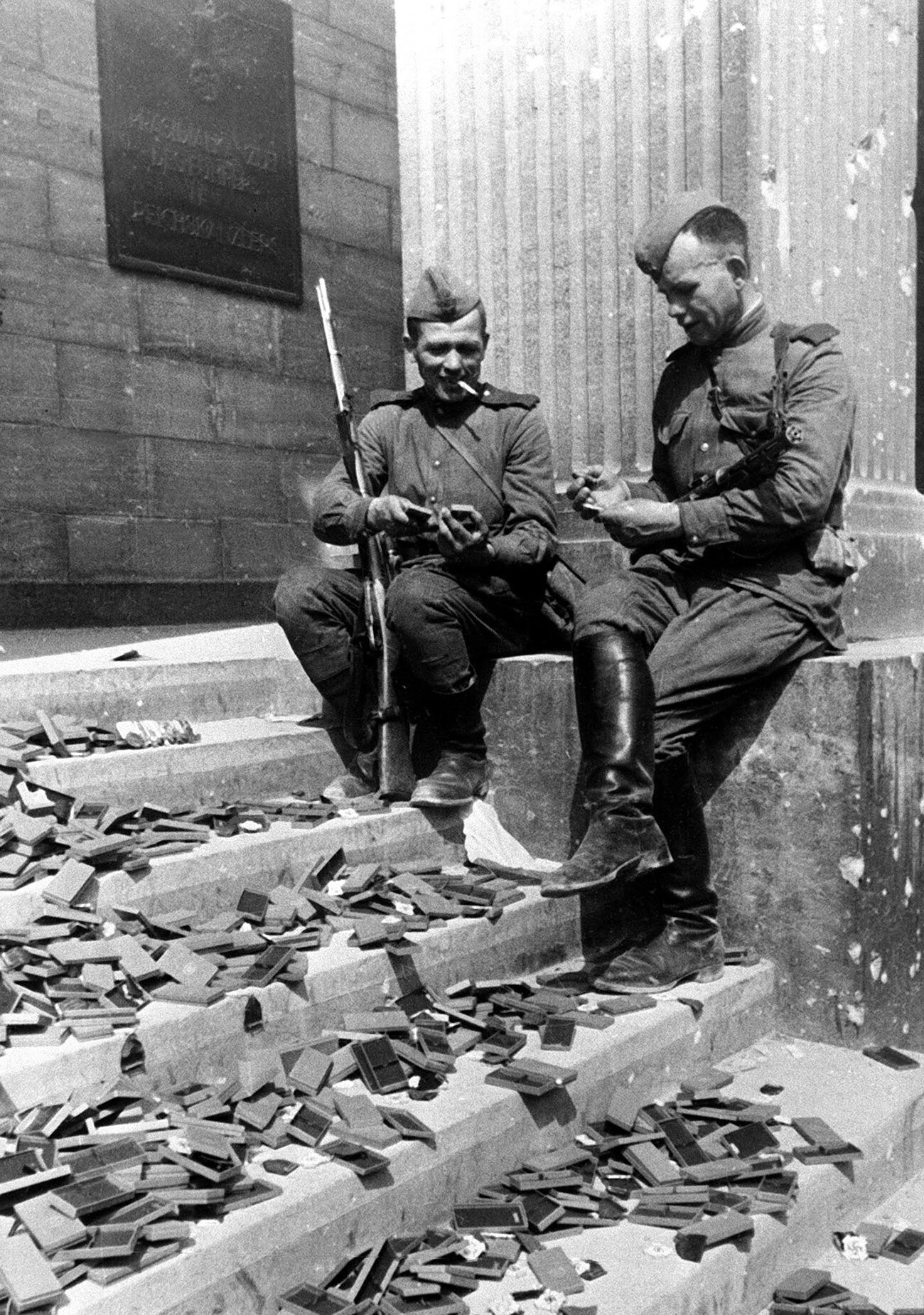
On the steps of the Reich Chancellery.
Evgeny Khaldey/TASSThe closer the Soviet troops approached the center of the city, the more ferocious the German resistance became. “Many defenders of the city were fighting for their existence in the hope that they could hold back the Soviets long enough to allow the Western armies to occupy as much of Germany as possible, and possibly even Berlin. But this hope was not destined to be realized,” according to an account given by Siegfried Knappe, an officer in the Wehrmacht’s LVI Panzer Corps.
On the day Hitler committed suicide on April 30, the German garrison was split into several isolated groups and fierce battles began for the Reichstag building. Soviet 152-mm howitzers and the mighty 203-mm howitzers nicknamed ‘Stalin’s sledgehammers’ fired at the building at point-blank range. On the evening of the same day, Red Army soldiers managed to plant the first red battle flag on the roof.
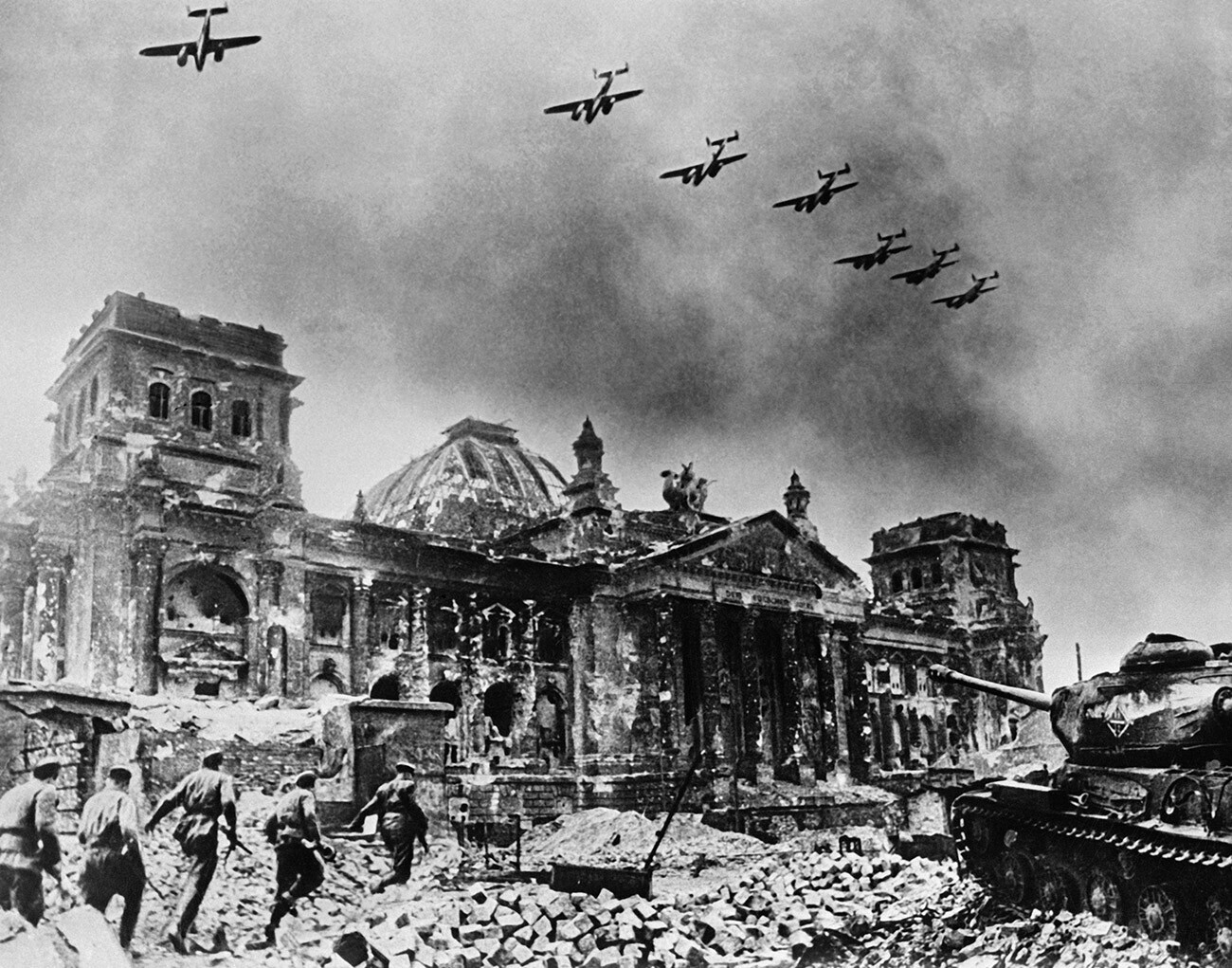
Soviet troops at the Reichstag.
Evgeny Khaldey/TASSOn the night of May 1, a German delegation led by General Hans Krebs, representing the new German government of Admiral Karl Dönitz, arrived under the protection of a white flag at the headquarters of the 8th Guards Army of General Vasily Chuikov. The Germans tried to agree a ceasefire, but received a categorical answer that was not at all what they wanted to hear - only unconditional capitulation.
On the morning of the same day, Sergeant Mikhail Egorov and Junior Sergeant Meliton Kantaria hoisted the battle flag of the 150th Rifle Division on top of the Reichstag - this was the flag that subsequently gained fame as the Victory Banner. Nevertheless, fighting in the building, which was ablaze from the detonations of Faustpatrone grenades, continued until late in the evening.
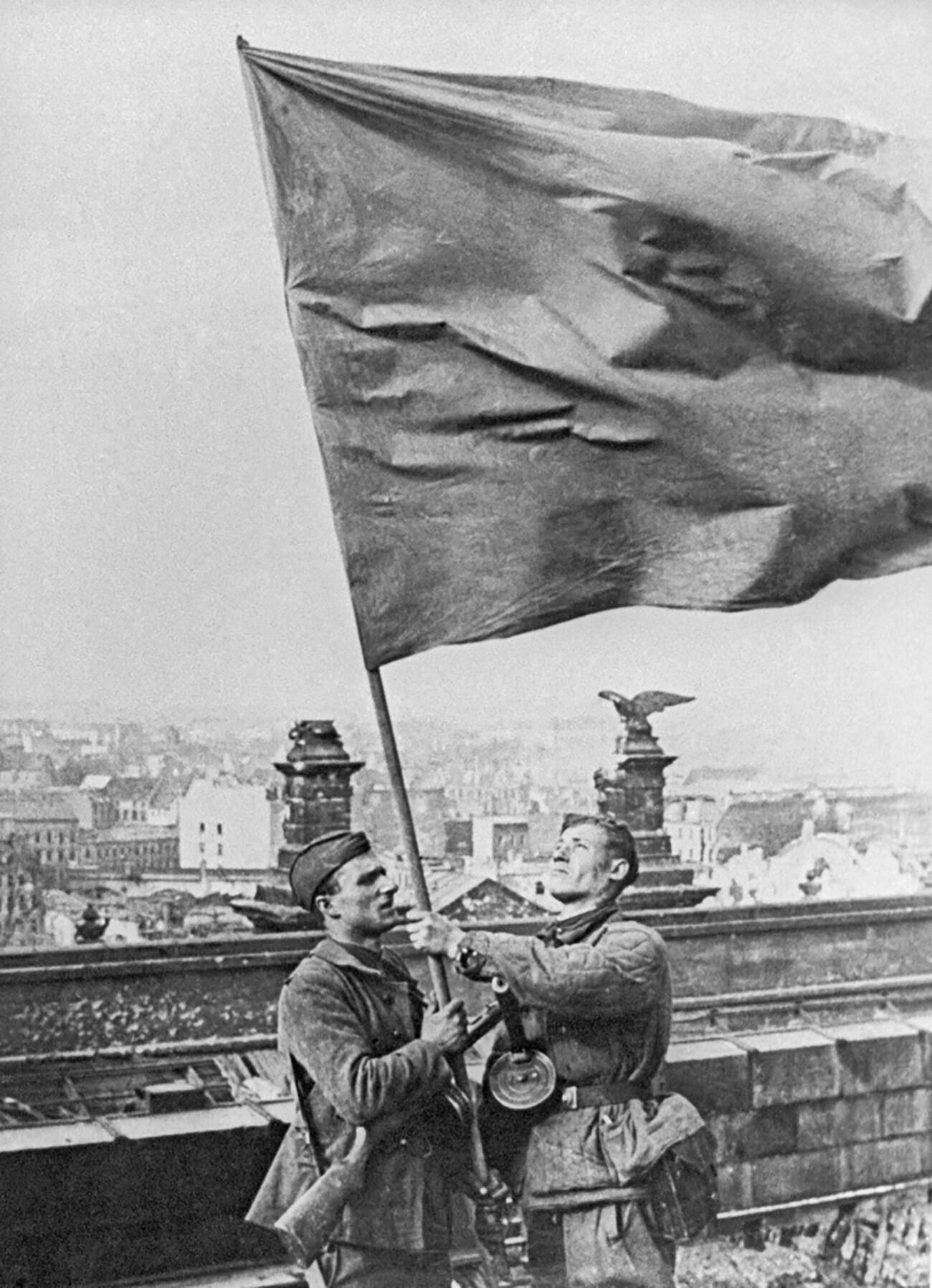
Sergeant Mikhail Egorov (R) and Junior Sergeant Meliton Kantaria.
Public DomainOn May 2, the German command finally decided that further resistance was futile. At half past six in the morning, Helmuth Weidling, the commandant of Berlin, ordered the remnants of the troops of the city’s garrison to surrender.
In the course of the Berlin offensive operation, the Red Army had smashed 70 infantry and 23 panzer and motorized divisions of the enemy. The number of killed and missing on the German side was around 100,000 (on the Soviet side - 80,000), while up to 480,000 were taken prisoner.
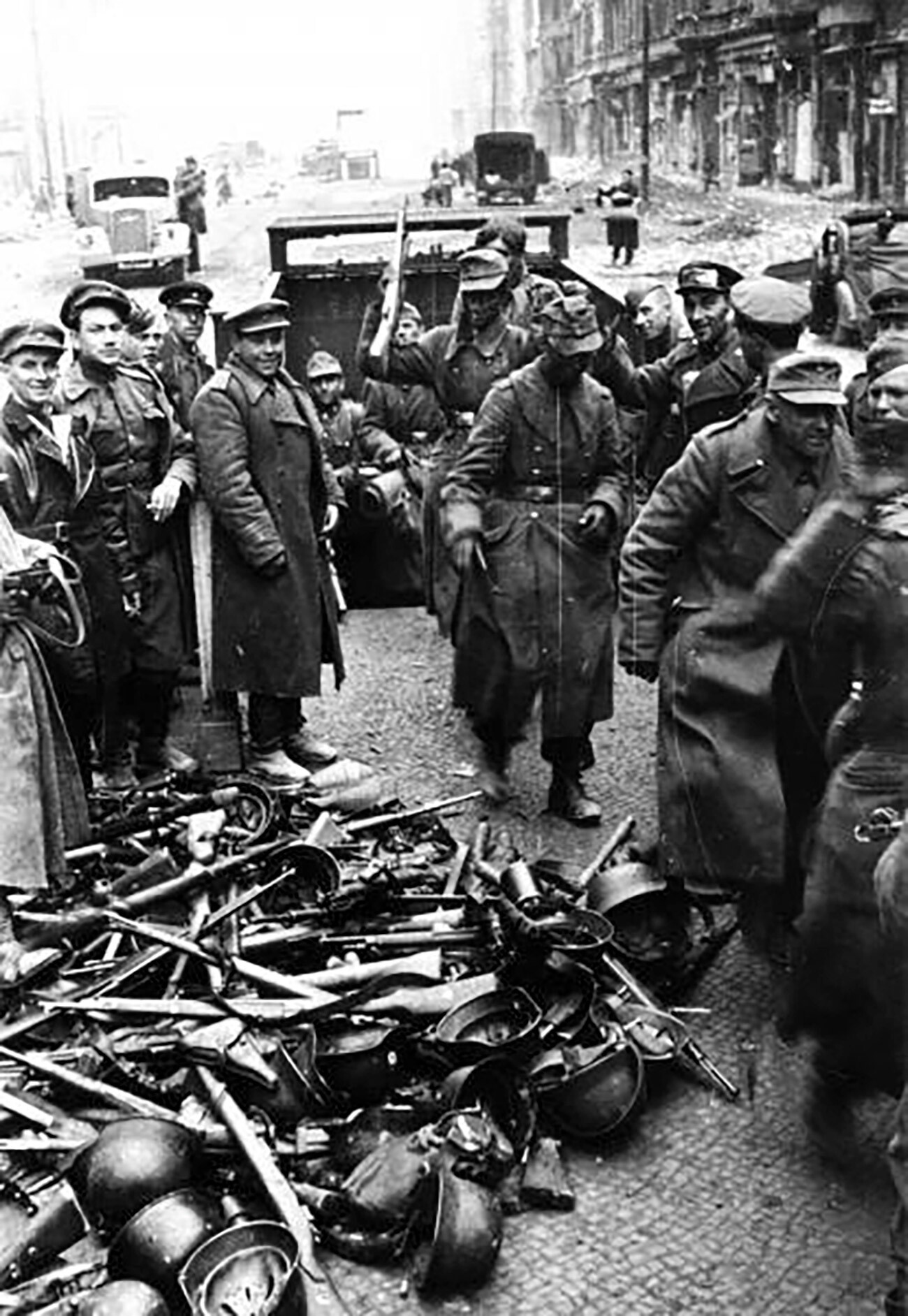
German troops surrender.
Mark Redkin/МАММ/МDF/russiainphoto.ruTens of thousands of Red Army servicemen were decorated for their courage and heroism in the fighting and more than 600 became Heroes of the Soviet Union. A total of 187 formations and units had the honorary prefix ‘Berlin’ added to their name.
However, the capture of the capital of the Third Reich did not lead to an immediate end to the war. The new government, located in northern Germany, was willing to surrender to the Americans and British, but not to the Soviet Union. Large German military contingents in Austria and Czechoslovakia were ready to put up a fight.
In addition, even a part of Soviet territory was still under enemy occupation. In Courland (western Latvia), a 200,000-strong German grouping, which had been cut off from the main German forces in Fall 1944, continued to resist, even after having been trapped with its back to the sea.

Machine gunner Viktor Levin at the captured Reichstag.
Timophey Melnik/SputnikIf using any of Russia Beyond's content, partly or in full, always provide an active hyperlink to the original material.
Subscribe
to our newsletter!
Get the week's best stories straight to your inbox